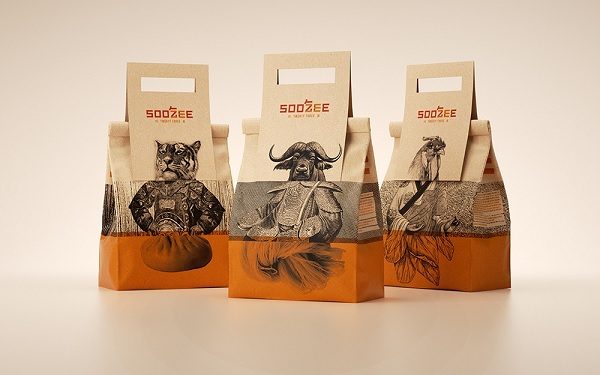Eco-Friendly Elegance: Sustainable Solutions in Food Packaging Design

Introduction:
In the fast-paced world of today, where convenience often takes precedence, the environmental impact of our choices cannot be overlooked. One area that has gained increased attention in recent years is food packaging design. As the demand for sustainable living grows, the food industry is responding with innovative and eco-friendly solutions that balance functionality with environmental responsibility.
The Evolution of Food Packaging Design:
Traditional food packaging has often been associated with excess waste and environmental harm. Plastic containers, styrofoam, and single-use items have dominated the market, contributing to the global plastic pollution crisis. However, the shift towards sustainable packaging design has become a focal point for manufacturers and consumers alike.
- Biodegradable Materials:
One of the most promising trends in sustainable food packaging design is the use of biodegradable materials. These materials break down naturally, reducing the burden on landfills and ecosystems. Innovations in packaging now include alternatives like compostable plastics, made from renewable resources like cornstarch. These materials provide the durability of traditional plastics without the environmental drawbacks. - Recyclable Packaging:
The emphasis on recyclable packaging has grown significantly. Manufacturers are opting for materials that can be easily recycled, such as paper, cardboard, and certain types of plastics. Additionally, clear labeling on packaging informs consumers about the recyclability of the materials, encouraging responsible disposal habits. - Reducing Single-Use Plastics:
Governments and businesses worldwide are implementing measures to reduce single-use plastics. This includes banning or restricting items like plastic straws, stirrers, and utensils. The food industry is responding by adopting alternative, more sustainable options, such as compostable cutlery and packaging made from plant-based materials. - Minimalist Design:
Sustainable food packaging design often embraces minimalist principles, using fewer materials and simpler designs. This not only reduces environmental impact but also creates an elegant and modern aesthetic. Brands are discovering that simplicity can be both visually appealing and ecologically responsible.
Innovations in Sustainable Packaging:
- Edible Packaging:
A groundbreaking development in food packaging design is the creation of edible packaging. This involves using materials that are not only biodegradable but also safe for consumption. For example, edible water bubbles made from seaweed extract are emerging as a sustainable alternative to traditional water bottles. - Reusable Packaging:
The concept of reusable packaging is gaining traction as consumers seek alternatives to single-use items. Companies are introducing reusable containers that customers can return for a discount on their next purchase. This model not only reduces waste but also fosters a sense of responsibility among consumers. - Smart Packaging:
Smart packaging integrates technology to extend the shelf life of products, reducing food waste. For example, temperature-sensitive labels that change color when a product has spoiled or packaging that alerts consumers when its contents are about to expire are becoming more common. These innovations contribute to both sustainability and efficiency in the food industry.
Consumer Awareness and Demand:
As consumers become more environmentally conscious, they are increasingly demanding sustainable options from food producers and retailers. This shift in consumer behavior is a driving force behind the industry’s move towards eco-friendly packaging solutions. Companies that prioritize sustainability in their packaging not only appeal to a growing market segment but also contribute to a positive environmental impact.
Challenges and Future Outlook:
While significant strides have been made in sustainable food packaging design, challenges persist. Cost considerations, limited availability of certain eco-friendly materials, and the need for standardized recycling infrastructure are obstacles that the industry continues to address. However, the momentum towards sustainability is undeniable, and ongoing research and development promise even more innovative solutions in the future.
Meeting the Challenges: Despite the progress, the transition to sustainable packaging is not without its challenges. The cost of eco-friendly materials can be higher than traditional alternatives, posing a barrier for some businesses. However, as technology advances and demand increases, economies of scale may bring down costs, making sustainable options more accessible.
Moreover, the availability of certain eco-friendly materials can be limited, leading to supply chain challenges. This highlights the need for continued investment in research and development to discover new materials or improve existing ones. Collaboration between businesses, governments, and research institutions is essential to overcome these challenges and foster a more sustainable future for food packaging.
Standardizing recycling infrastructure is another critical aspect of the transition to sustainable packaging. Many consumers are willing to recycle, but the lack of consistent recycling facilities can hinder their efforts. Governments and businesses must work together to invest in and promote recycling infrastructure, making it easier for consumers to participate in sustainable practices.
The Future of Sustainable Food Packaging:
The future of food packaging design is undoubtedly headed towards increased sustainability. As technology advances and consumer awareness grows, the industry is likely to witness even more innovative solutions. The integration of circular economy principles, where materials are reused and recycled in a closed loop, holds great promise for reducing environmental impact.
In the coming years, we can expect to see further developments in materials science, allowing for the creation of packaging that is not only sustainable but also functional and aesthetically pleasing. Brands that prioritize sustainability will not only meet consumer expectations but also contribute to a healthier planet.
Conclusion:
“Eco-Friendly Elegance: Sustainable Solutions in Food Packaging Design” represents not only a trend but a paradigm shift in the way the food industry approaches packaging. From biodegradable materials to edible packaging, the landscape is evolving towards a more sustainable and environmentally responsible future. As consumers increasingly prioritize eco-friendly choices, the food packaging design industry has the opportunity to lead the way in creating a more harmonious balance between modern convenience and ecological responsibility. While challenges persist, the momentum towards sustainable solutions is strong, paving the way for a future where elegance and environmental consciousness coexist seamlessly in food packaging design.


